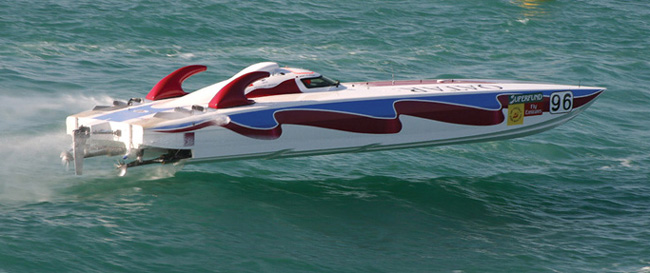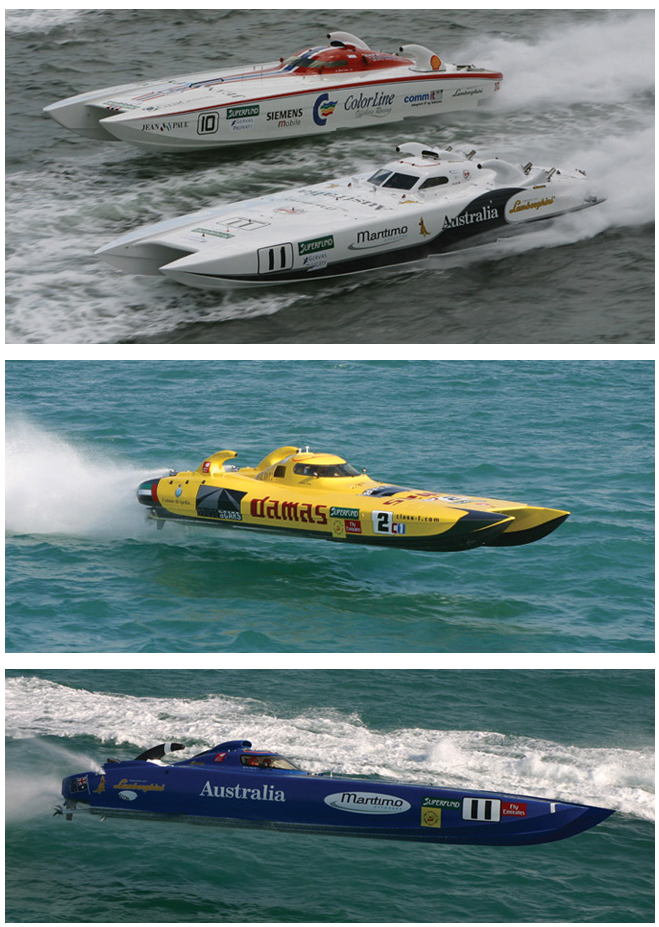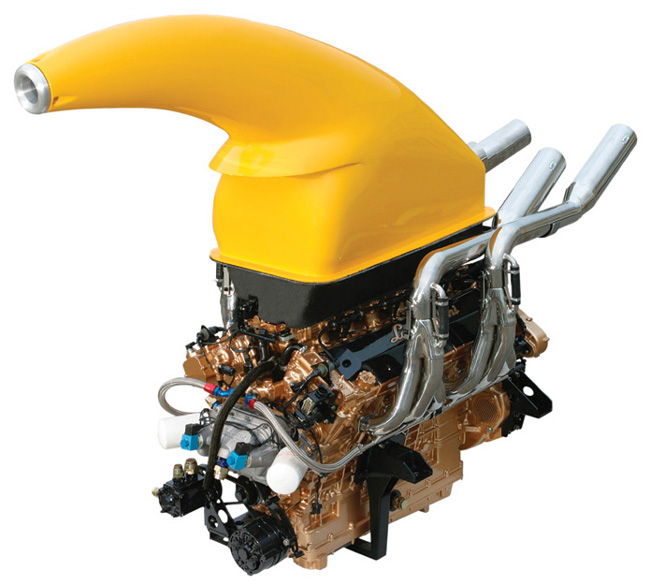 Motori Marini Lamborghini S.p.A.
Motori Marini Lamborghini S.p.A.
The story of Lamborghini’s marine engines started 35 years ago when Ferruccio Lamborghini decided to try out the Espada engine on a newly-designed boat by the mythical Eugenio Molinari. The same engine was then installed on a Riva Super Aquarama, the latter of which took part in the first offshore race on the Adriatic Sea from Cervia to Pola with Ferruccio Lamborghini himself at the throttle.
During those first years Lamborghini had also produced its own boat, the Quetzal. This “cigar”, so these offshore boats were called at that time, designed by Aldo Cicero, had an engine deriving from the Lamborghini LM off-road with the displacement increased to 8.000 cc. The boat was available in two versions: one for competitions (fuel injection) and the other one for fast pleasure (carburettor). The Quetzal is still to this very day alive in the memories of speedboat racing enthusiasts both for its performance as well as for its fascinating design.
Due to the difficult years in Automobili Lamborghini, production came to a halt and Ferruccio Lamborghini decided to commission Ing. Alfieri to design a new engine, a 12- cylinder 8.200 cc, for offshore racing. It was in 1984 that an aluminium-material built C.U.V. (Cantieri Uniti di Viareggio) designed boat made its debut. Since then the technical development evoluted from carburettor to the actual injection engine flanked by the 4-speed to the 6-speed gearbox till the year 2001, the year in which the latter was banned from the Sporting Regulations. This is how the participation in offshore racing took off where several drivers were confirmed: Dalla Valle, Casiraghi, Curtis, Bonomi, Ferretti, Panatta, Alboreto, De Angelis, Pironì, Cosentino, Buzzi, Ferraris, Abate, Arnoux, Dyke etc. Lamborghini won eight World Champion titles and six European ones. Today, many offshore drivers own a Lamborghini and this proves the success of the House of the Bull.
Offshore racing competitions – Superfund Class 1 World Powerboat Championship – take place in all corners of the world and since the early 1990’s catamarans, reaching a speed of 250km/h over the water, have substituted the mono-hulls. Teams like Victory (U.A.E.) and Spirit of Norway (Norway) have honoured the Lamborghini name with amassing numerous victories. For the future we are geared up to race in China, Malaysia and Australia. We are now winners of the 2003 World Championship offering direct technical assistance at the race sites and engine development to three official boats: Spirit of Norway (Norway), World Champion title holders; Maritimo (Australia) and Qatar Marine Sports Federation (Qatar).
A race engine complete with air scoop costs about €90,000.
Lamborghini’s rival engines are: Seatek V12 diesel, Mercruiser V8 gasoline, Sterling V8 gasoline, Isotta Fraschini V8 diesel and Keith Eikert V8 gasoline.
The “R-Infinito” Lamborghini boat was designed by Ing. Lucini for racing on lake waters. This craft participated in the Pavia-Venezia race on the River Po, the “100 Miglia del Lario” race on Lake Como, and the Borretta-Po race.


Motori Marini Lamborghini
Powerful on the road like at seaPronouncing the name Lamborghini is like evoking a dream for those who are familiar with the world of cars.Miura, Espada, Countach, Diablo are names which immediately make one think of cars having a remarkable speed, characterized by unique design which perfectly combine style and aerodynamics and above all exclusiveness which does not create any envy. It is as if each of us share the pleasure with those who are lucky enough to own one.All this is thanks to the perseverance with which Ferruccio Lamborghini, since 1963, has carried out the project of granting Italy a new prestigious car make for worlwide export. This has definitely been accomplished because never like before has the House of the Bull represented a myth throughout the world. Lamborghini has had to face several dramatic times during the years and yet it has brilliantly overcome them thus reaching the current safe landing.From the road to the waves of the seaThe matching of the Lamborghini make with cars is practically automatic but this mental process is not the same for the marine competitions field. In this field the F1 of the Seas is definitely Offshore which was set up a few decades ago and for this reason it is not well known and in some way it is considered to be expensive and elite. If however one considers that there are a little more than 20 racing cars participating in the F1 Championship and that they are able to offer a great performancewhich every time is followed by hundreds of million of persons. The equivalent World Offshore Championships are able to arouse the same sensations in view of the 10/15 boats. They offer an exciting and extraordinary performance. However the public, keen on these competitions, cannot be compared to the pecially for the lack of commitment by media, TV in the first place.
